A ceiling fan can be a valuable asset in any home, providing much-needed airflow and comfort during the hot summer or even throughout the year.
However, encountering issues with a ceiling fan, such as not working, can be frustrating and inconvenient. One famous brand known for its quality and performance is Minka Aire.
If you’re facing the problem of your Minka Aire ceiling fan not working, several potential causes could be at play.
In this guide, we will explore some common reasons why your Minka Aire ceiling fan may not function and suggest troubleshooting steps to help you identify and possibly resolve the issue.
Remember, though, that it’s always recommended to consult a professional electrician if you’re uncertain or uncomfortable dealing with electrical matters.
Minka Aire Fans Troubleshooting
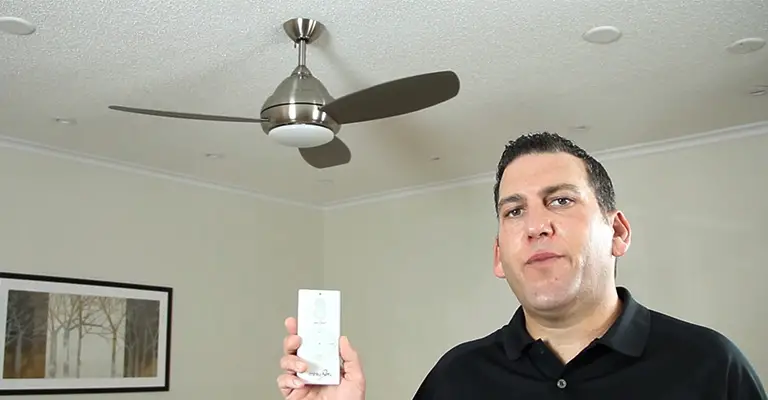
Minka Aire fan troubleshooting includes resetting the fan, examining the wiring, wall switch, and power source, and repairing the mounting.
Licensed professionals and Minka Aire’s customer support team can also assist in troubleshooting. When your ceiling fan runs slower than average, it can be frustrating.
You can troubleshoot and resolve this issue by taking a few simple steps. Follow these steps to fix your slow-moving fan blades:
Troubleshooting Blown Fuses and Tripped Circuit Breakers
You may have an electrical issue with your Minka Aire ceiling fan, such as a blown fuse or trip circuit breaker. To troubleshoot these common problems, you should do the following:
1. Check the Wiring
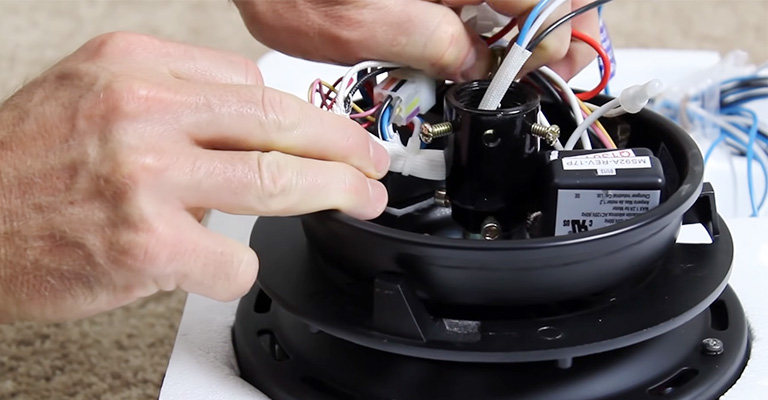
If the wiring isn’t working, check it out. Check for any visible issues with the ceiling fan’s wiring, such as frayed or damaged wires. Wires that are damaged will need to be replaced if they are found.
2. Check the Wall Switch
It is important to check the wall switch that controls the ceiling fan. You must ensure the power and switch are in the “on” position.
3. Check the Power Source
Make sure that the ceiling fan is receiving power. Ensure the fan receives power by checking the wiring with a voltage tester.
Be sure not to have any issues with the circuit breaker, fuse box, and wiring to the fan if there is no power.
4. Get in Touch With a Professional
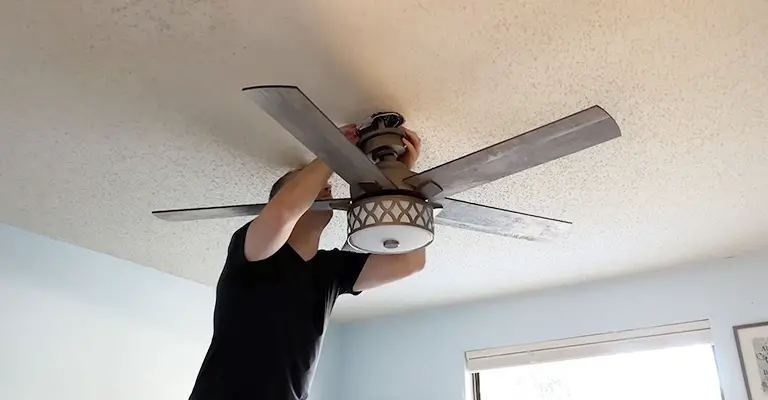
Trying these steps may not solve the problem; you may need to contact a professional electrician to investigate and fix the problem.
It is never advisable to work on electrical components if you are not experienced and confident.
Your first priority should always be safety.
Troubleshooting a Wobbly Ceiling Fan
Fixing a wobbly ceiling fan can be a hassle, but it is relatively easy. Troubleshoot and repair your fan by following these steps:
1. Check The Fan Box Or Fan Brace
In the first step, ensure all the fasteners, screws, and other components of the fan box and fan brace are tightened properly. Using a screwdriver, you can tighten up any loose ones.
2. Look For Blade Cracks Or Warping
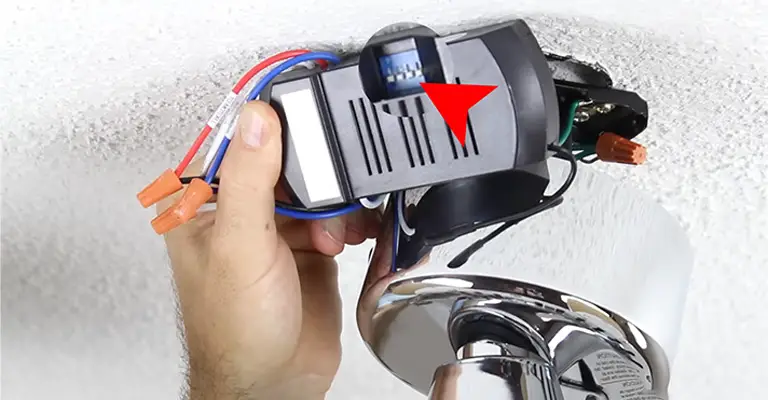
After that, inspect each blade for cracks or warping. Whenever you find damage in the blade, replace it with a good one.
3. Ensure All Blades Are Evenly Balanced
Make sure that all of the blades are well-balanced if they appear to be in good condition.
Turn on the fan at high speed, then tape a dime to the middle of one blade. You should repeat this test for each blade until you find out which one wobbles less when you turn it on.
The blade with the most weight usually causes this problem. If the heavier blade is lighter than, the lighter blade, you can balance it out by removing some material from the heavy blade.
4. Make Sure Everything Is Properly Secured
In addition, you should ensure that the components of your ceiling fan are tightly attached.
As part of this process, you should ensure that all screws and mounting brackets are tightly secured and that there is no play in them for you to move them with your hands.
Troubleshooting Fan Blades Moving Slowly
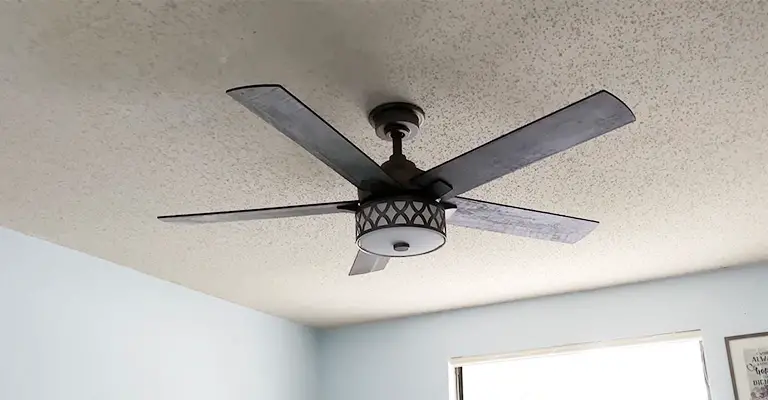
Having a ceiling fan running slower than usual can be frustrating.
You can troubleshoot and resolve this issue by taking a few simple steps. Follow these steps to fix your slow-moving fan blades:
1. Tighten the Screws in the Mounting Bracket
To check whether all of the screws in the mounting bracket are tight, you need to check the screws first.
You can tighten any of them that are loose using a screwdriver. Having loose screws can cause the fan to wobble, causing it to run slower.
2. Clean Blades
You should also check each blade’s sides for debris and dust. Blades can slow down over time as dust and debris accumulate on them. Keep the blades clean by wiping them with a soft cloth, not bending or damaging them.
3. Check for Loose or Unbalanced Blades
Check the blades for any loose or unbalanced pieces if tightening the screws and cleaning them does not solve the problem.
The fan blades should be securely attached to the fan and evenly balanced. A fan with an unbalanced blade may wobble, resulting in a slower fan.
4. Contact Minka Aire Customer Service
You should contact Minka Aire customer service if none of these steps resolves your issue.
In some cases, they will be able to provide a solution or arrange for a repair or replacement if needed.
Troubleshooting Fan Blades Not Turning in the Other Direction
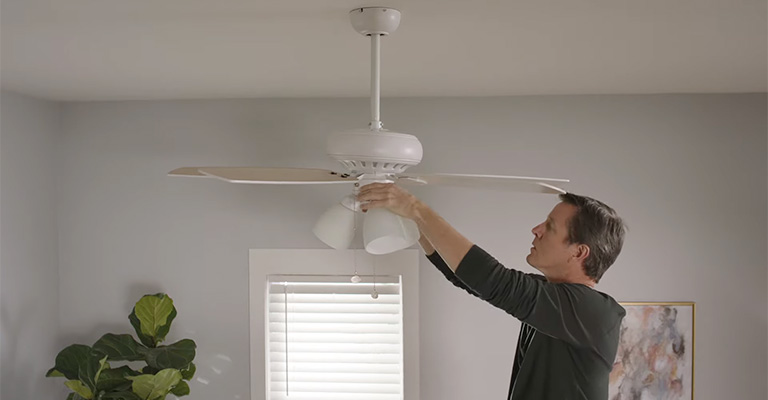
You may encounter a few different factors if your Minka Aire ceiling fan blades are not turning in the opposite direction. Troubleshooting and fixing this problem involves following these steps:
1. Check the Direction Switch
Start by ensuring the direction switch on the motor housing is set correctly.
Fan blades can usually be rotated by flipping up or down the direction switch on the side of the motor housing.
You need to make sure that the switch is set in the opposite direction from where it is now. The next step should be to turn off the fan and try again.
2. Inspect the Capacitor
Capacitors are small devices enclosed within the fan motor housing that control the fan’s speed and direction.
A faulty or damaged capacitor can sometimes prevent the blades from rotating in the opposite direction. The power to the fan should first be turned off at the circuit breaker to inspect the capacitor.
Identify and remove the capacitor from the fan motor housing. If the capacitor appears to be damaged, such as bulging or leaking, inspect it. Replacing the capacitor if it shows any signs of damage is important.
3. Verify the Wiring Connections
In this case, the wiring connections may cause the problem, provided the direction switch and capacitor are in good shape.
You should ensure that all of the wires attached to the motor housing are secure and in the correct location. Also, ensure there are no loose or frayed wires.
You should turn off the fan if you notice any loose or frayed wires and then replace the damaged wires.
Troubleshooting a Minka Aire Ceiling Fan Humming Noise
Here are some steps you can take to troubleshoot a Minka Aire ceiling fan that is making humming noises. Take the following steps:
1. Check the Screws in the Mounting Bracket
First, check the screws in the mounting bracket when troubleshooting a humming Minka Aire ceiling fan.
The looseness of screws can lead to vibrations and humming noises, so ensure they are tight. If you find loose screws, tighten them with a screwdriver.
Make Sure Blades Are Mounted Correctly and Securely. Next, make sure the blades are mounted correctly and securely to the blade arms.
The blade arms should be tightened using a screwdriver. Ensuring all blades are securely fastened and do not wobble when spinning is important.
You should tighten the set screws if you notice that any blades are loose or wobbling.
2. Check the Light Kit
Ensure all light bulbs are securely screwed in and tight to the light kit if the humming noise is coming from it. Loose light bulbs cause vibrations and humming noises.
You should replace the light bulbs with ones compatible with the Minka Aire ceiling fan if the humming noise persists.
3. Check the Fan Motor
There is a possibility that the fan motor is the source of the humming noise if none of the previous steps assists in resolving the issue.
Verify that the fan motor is properly mounted and that all the screws holding it are tight. Having a loose motor can cause vibrations and humming sounds.
Upon mounting the motor securely, work with Minka Aire customer service if the humming noise persists.
Depending on the issue, they may be able to provide further troubleshooting tips or send out a replacement part.
Troubleshooting Debris or Dust Buildup on Fan Blades
Dust and debris can cause ceiling fans to work less efficiently and produce irritating rattling or grinding sounds. Following these tips, you can clean your fan blades in a few easy steps.
1. Put a Pillowcase over Each Blade and Wipe Them
You should first place a pillowcase over one of the fan blades and gently pull the pillowcase over it as you wipe it, capturing the dust and debris in it.
You will therefore prevent any dust or debris from falling onto the floor or other surfaces. Continue cleaning the other blades until all of them are clean.
2. Use Compressed Air to Clean the Motor Housing
The motor housing can be cleaned more effectively using compressed air. It will ensure that the fan is operating smoothly and efficiently.
3. Vacuum The Fan Blades With A Brush Attachment
When you clean your fan blades, attach a brush to your vacuum cleaner and slowly turn it up and down while moving the brush. To get rid of any remaining dust or debris on the blades, remove them.
4. Wipe Each Blade with a Microfiber Cloth
Using a microfiber cloth, wipe each blade to minimize swirling dust. You may want to dampen the fabric if you have thicker dust layers.
Make sure the cloth doesn’t get completely saturated. Simply dampen it with a little water. It’s better to use a different towel or cloth to dry the blades if you don’t.
5. Use a Dust-Repelling Spray or Create Your Own
Several dust-repelling sprays exist, such as Endust. This is an option for preventing dust buildup in the future.
The spray you make can repel dust. The liquid fabric softener should be mixed with four parts water. Spray each blade with the spray bottle filled with the mixture. Use a clean cloth or paper towel to wipe it off.
6. Scrub Away Any Remaining Dirt or Grime
Use an old toothbrush to clean away any remaining dirt and grime around the motor housing and the base of each blade.
After cleaning everything off, dry it off with a clean cloth or towel. Your fan will work more efficiently and remain clean if you clean it regularly.
Final Words
You should troubleshoot your Minka Aire gyro ceiling fan whenever there is a problem to identify the primary cause.
Ensure you turn off the power from the circuit breaker and not from the fan switch before repairing anything inside the unit. Depending on the problem, you may have to replace the switch, capacitor, or motor.
We have covered all the possible issues you may encounter in this article, and we hope you can now fix your ceiling fan. Alternatively, you can contact Minka Aire customer support.

![Minka Aire Ceiling Fan is Not Working! [Troubleshooting Guide]](https://www.gofulldiy.com/wp-content/uploads/2023/05/Minka-Aire-Ceiling-Fan-is-Not-Working.jpg)






